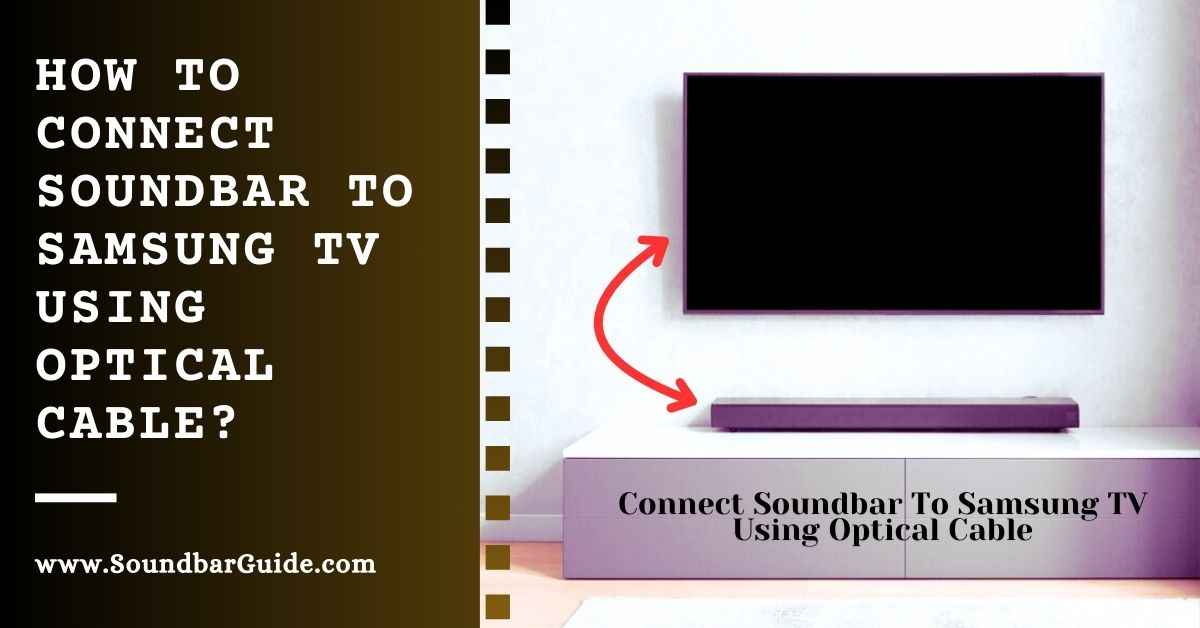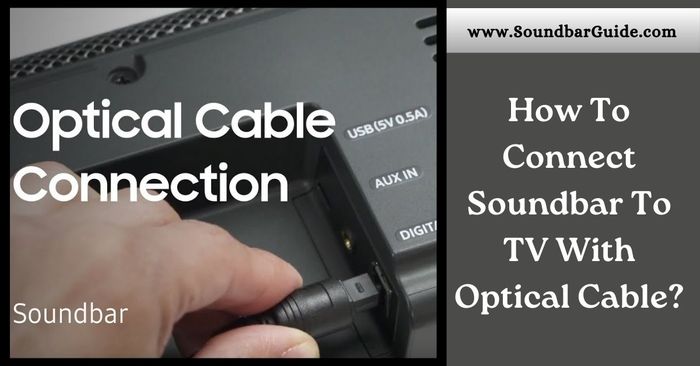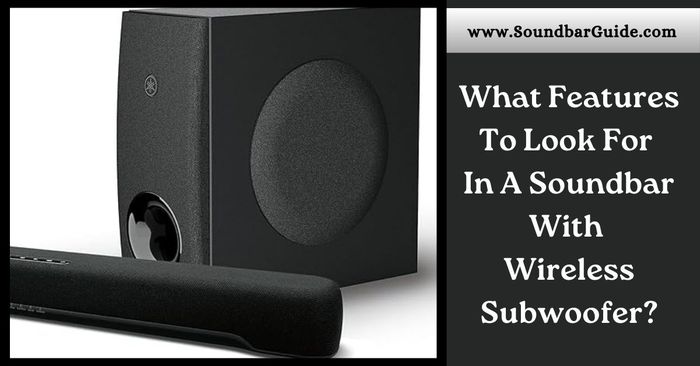If you want to enhance your audio experience while watching TV shows and movies, connecting a soundbar to your Samsung TV is an easy solution.
However, not everyone knows the right way to connect a soundbar to a Samsung TV via optical cable.
So, do you want to know how to connect soundbar to Samsung TV using optical cable?
To connect a soundbar to a Samsung TV using an optical cable, simply plug one end of the cable into the soundbar and the other end into the TV’s optical port. The optical cable is the most common and reliable way to connect your soundbar to your TV.
In this post, I am going to share a detailed guide on connecting a soundbar to a Samsung Tv following the right way.
So, let’s dive in…
Table of Contents
Understanding Optical Cables
Optical cables, also known as TOSLINK cables, are a type of audio cable that use light to transmit sound signals.
This method of data transfer has several advantages over traditional analog connections, making it a popular choice for high-quality audio setups.
What Is An Optical Cable?
An optical cable is a thin, flexible cable made from plastic or glass fibers. These fibers transmit digital audio signals in the form of light pulses.
The main advantage of using light to transmit data is that it eliminates electrical interference, ensuring a clearer and more accurate sound reproduction.
Benefits of Using Optical Cable
- High-Quality Audio: Optical cables can carry high-resolution audio signals, providing superior sound quality compared to analog connections. This makes them ideal for connecting your soundbar to your TV, ensuring you get the best possible audio experience.
- Minimal Interference: Since optical cables use light to transmit signals, they are immune to electromagnetic interference. This is particularly beneficial in environments with many electronic devices, as it helps maintain a clean audio signal.
- Easy to Use: Optical cables are straightforward to connect and use. They typically feature a standardized connector, known as a TOSLINK connector, which fits snugly into the corresponding ports on your TV and soundbar.
- Durability: Optical cables are designed to be durable and resistant to wear and tear. They are less prone to degradation over time compared to copper cables, ensuring a long-lasting connection.
By understanding what optical cables are and their benefits, you can better appreciate why they are a preferred choice for connecting your soundbar to your Samsung TV.
Preparing for the Connection
Before you start connecting your soundbar to your Samsung TV using an optical cable, it’s important to prepare all the necessary equipment and ensure that both devices are ready for the setup.
This will make the process smoother and help avoid any potential issues.
List of Necessary Equipment
- Samsung TV: Ensure that your Samsung TV has an optical output port. This is usually labeled “Optical” or “Digital Audio Out (Optical).”
- Soundbar: Your soundbar should also have an optical input port. This port is typically labeled “Optical In” or “Digital Audio In (Optical).”
- Optical Cable: A standard TOSLINK optical cable. Make sure the cable is of sufficient length to comfortably reach between your TV and soundbar.
How To Connect Soundbar To Samsung TV Using Optical Cable?
Connecting your soundbar to your Samsung TV using an optical cable is a straightforward process.
Follow these steps to ensure a successful connection and enhance your audio experience:
Step 1: Locate the Optical Ports
- On the Samsung TV:
- Look at the back or side panel of your Samsung TV.
- Find the port labeled “Optical,” “Digital Audio Out (Optical),” or a similar designation.
- This port is typically a small, square opening with a protective flap.
- On the Soundbar:
- Locate the “Optical In” or “Digital Audio In (Optical)” port on the back of your soundbar.
- This port should look similar to the one on your TV.
Step 2: Connect the Optical Cable
- Insert the Cable into the TV:
- Take one end of the optical cable and gently insert it into the optical output port on your Samsung TV.
- Ensure it clicks into place and is securely connected.
- Insert the Cable into the Soundbar:
- Take the other end of the optical cable and connect it to the optical input port on your soundbar.
- Again, ensure it clicks into place and is firmly connected.
Step 3: Power On the Devices
- Plug In and Turn On:
- Plug both your TV and soundbar back into the power outlet if they were unplugged.
- Turn on both devices using their respective power buttons or remote controls.
Step 4: Set the TV Audio Output to Optical
- Access the TV Settings:
- Use your TV remote to access the menu. This is usually done by pressing the “Menu” or “Home” button.
- Navigate to the “Settings” menu.
- Select Audio Settings:
- Find the “Sound” or “Audio” settings within the menu.
- Look for the option labeled “Audio Output,” “Sound Output,” or a similar term.
- Choose Optical Output:
- Select “Optical” or “Digital Audio Out (Optical)” as the audio output option.
- Confirm your selection and exit the settings menu.
Step 5: Adjust Soundbar Settings
- Select the Optical Input:
- Use the remote control or buttons on your soundbar to select the optical input.
- This may be labeled as “Optical,” “Digital,” or “Input” depending on your soundbar model.
- Test the Connection:
- Play audio from your TV to ensure it is being output through the soundbar.
- Adjust the volume on both your TV and soundbar as needed to achieve the desired audio level.
Final Check
- Audio Quality:
- Listen to the audio to ensure it is clear and free from distortion or interference.
- If the audio quality is not satisfactory, double-check the cable connections and settings.
- Sync Issues:
- Ensure the audio is in sync with the video. If you notice any lag, some soundbars have a “Lip Sync” or “Audio Delay” feature that can help adjust the timing.
By following these steps, you should have successfully connected your soundbar to your Samsung TV using an optical cable. This setup will provide you with a high-quality audio experience, enhancing your enjoyment of movies, TV shows, and other media.
If you encounter any issues, refer to the troubleshooting section for common problems and solutions.
Configuring Soundbar Settings
First, access the soundbar settings by using the remote control. Look for the gear icon or the settings button and press it to open the soundbar menu.
Next, select the optical input by using the arrow keys and press OK. This will allow the TV audio to be transmitted to the soundbar through the optical cable.
After that, configure the EQ settings to adjust the sound quality. Depending on your preferences, you can increase or decrease the bass, treble, or other sound settings to enhance your audio experience.
| Action | Instruction |
|---|---|
| Access Soundbar Settings | Press the gear icon or settings button on the remote control |
| Choose Optical Input | Select the optical input using the arrow buttons and press OK |
| Set EQ Settings | Configure the sound settings based on your preferences to enhance the audio quality. |
Troubleshooting Common Issues
Even with a straightforward setup, you might encounter some common issues when connecting your soundbar to your Samsung TV using an optical cable.
Here are some troubleshooting tips to help resolve these problems.
Issue 1: No Sound from the Soundbar
- Check the Cable Connections:
- Ensure that the optical cable is securely connected to both the TV and the soundbar. Sometimes the cable may not be fully inserted into the ports.
- Inspect the cable for any visible damage. If the cable is damaged, replace it with a new one.
- Verify TV Audio Settings:
- Access the TV’s audio settings and confirm that the audio output is set to “Optical” or “Digital Audio Out (Optical).”
- Make sure the TV volume is not muted and is set to an appropriate level.
- Check Soundbar Settings:
- Ensure the soundbar is set to the correct input (optical). Use the soundbar’s remote control or onboard buttons to select the optical input.
- Verify that the soundbar volume is not muted and is turned up.
Issue 2: Audio Delay or Synchronization Issues
- Adjust Lip Sync Settings:
- Many soundbars have a “Lip Sync” or “Audio Delay” feature. Access your soundbar’s settings and adjust the lip sync to reduce any delay.
- Check TV Settings:
- Some Samsung TVs also offer an “Audio Delay” feature in the sound settings. Adjust this setting to synchronize the audio with the video.
Issue 3: Intermittent Audio Dropouts
- Inspect the Optical Cable:
- Ensure the optical cable is not damaged or bent sharply, as this can cause audio dropouts.
- Check the cable connections to make sure they are secure.
- Avoid Interference:
- Keep the optical cable away from other electronic devices that might cause interference.
- Make sure there are no obstructions between the TV and soundbar that could affect the optical signal.
Issue 4: Low Audio Volume
- Adjust Volume Settings:
- Increase the volume on both the TV and the soundbar. Sometimes, the TV volume needs to be set higher when using an external sound system.
- Check if the soundbar has an independent volume control for different inputs and ensure the optical input volume is not set too low.
- Verify Audio Settings:
- Ensure that any dynamic range control or volume leveling features on your soundbar are set appropriately. These features can sometimes reduce the overall volume.
Issue 5: No Optical Output Option in TV Settings
- Update TV Firmware:
- Ensure your Samsung TV has the latest firmware update. Outdated firmware can sometimes cause issues with audio output settings.
- Reset TV Settings:
- If the optical output option is not available, try resetting the TV to its factory settings. This can often resolve hidden software issues.
If that still doesn’t work, try resetting the soundbar. This can often resolve any issues caused by settings or software glitches.
FAQs On Connecting Soundbar To Samsung TV Using Optical Cable
How To Connect A Soundbar To Vizio TV Using Optical Cable?
To connect a soundbar to a Vizio TV using an optical cable, first plug one end of the optical cable into the optical port on the TV and the other end into the corresponding port on the soundbar. Then, change the TV’s audio settings to output sound through the optical cable.
How Do I pair My Soundbar To Samsung TV?
To pair your soundbar to a Samsung TV, ensure both devices are powered on. Use an HDMI cable or optical cable to connect the soundbar to the TV’s corresponding port. Then, adjust the TV’s audio settings to recognize the soundbar as the primary audio output.
How Do I Get My Samsung TV To Recognize My Soundbar?
To get your Samsung TV to recognize your soundbar, first make sure your soundbar is properly connected to your TV, either through HDMI or optical cable. Then, go to your TV’s sound settings and select the option to use external speakers.
Finally, choose the sound output as the connected soundbar and adjust any necessary settings.
Is It Better To Connect Soundbar To TV Optical Or HDMI?
Connecting soundbar to TV through HDMI provides better audio quality as it can support Dolby Atmos and DTS:X formats. But if your TV and soundbar do not have HDMI ARC, you can connect them through an optical cable.
Will A Samsung Soundbar Connect To Any TV?
Yes, Samsung soundbars are generally compatible with most TVs, regardless of the brand. As long as your TV has the necessary ports (like HDMI or optical), you should be able to connect a Samsung soundbar easily for enhanced audio quality and immersive viewing experience. However, it’s always a good idea to double-check the compatibility and available connections to ensure seamless integration.
Conclusion
Connecting a soundbar to your Samsung TV using an optical cable might seem intimidating, but it’s a straightforward process that can greatly enhance your viewing experience.
From the above discussion, you have definitely got a clear idea about how to connect soundbar to Samsung tv using optical cable.
Still, if you face any issue, you can send me a message or comment below.
I would love to help you out.
Keep in mind that with a bit of patience and attention to detail, you can easily connect your soundbar to Samsung TV and start enjoying immersive sound that will take your entertainment to the next level.


![How To Connect Vizio Soundbar To Vizio TV: [Step By Step Guide]](https://soundbarguide.com/wp-content/uploads/2024/10/how-to-connect-vizio-soundbar-to-vizio-tv.jpg)


Leave a Reply